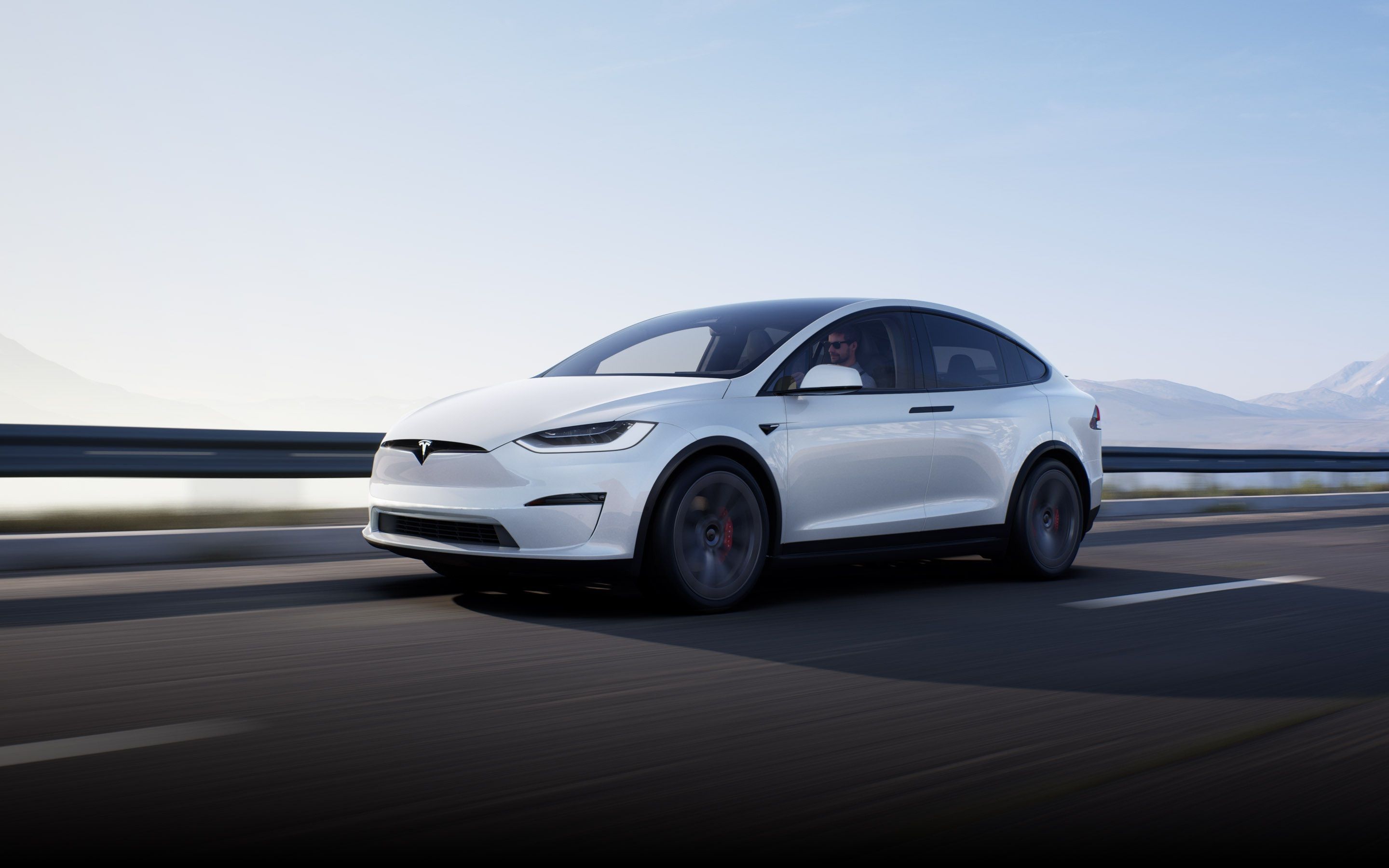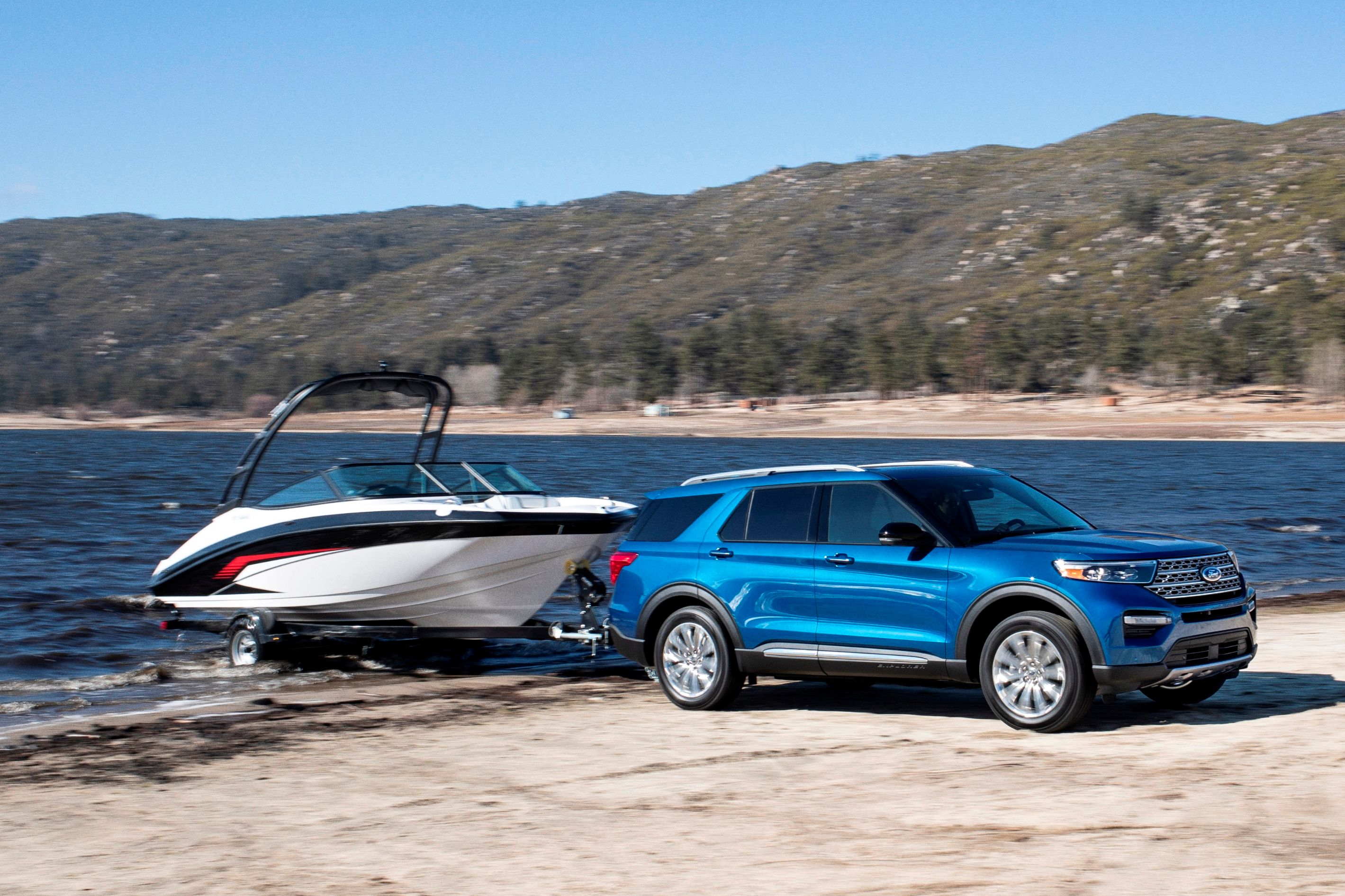
Given the sheer grunt an electric motor provides from the moment you step on the throttle, you'd expect the towing capacity of a hybrid or electric vehicle to be rather impressive. However, using an EV or hybrid car to tow is no different from any other vehicle. It all depends on their design - some will naturally be hardier than others. Battery electric vehicles (BEV) have the capacity to be impressive workers, though they may not be seen as the best towing vehicles overall. In this discussion, we'll break down what the differences are, and tips for correct towing with an EV, hybrid, or plug-in car.
Towing With Electric Vehicles
It may seem strange given the torque-rich nature of electric vehicles (EVs), but it's not just a case of fitting a hitch and towing a trailer. Most EVs wouldn't legally be allowed to tow a caravan in the USA. There are three reasons why most EVs don't come with a tow rating in the US.
- Weight
- Regenerative braking systems
- Range
The motor that drives the wheels in an electric tow vehicle may be small and weigh next to nothing, but the batteries add significant weight. We can compare an electric crossover/SUV with a traditional gas-engined model to understand the weight difference. The perfect comparison comes from Mercedes-Benz. Its EQC EV weighs 5,500 pounds, of which the battery is around 1,500 lbs. It uses the same platform as the GLC, which comes as standard with a turbocharged four-pot engine, weighing a total of under 4,000 lbs. We can even take it a step further and look at the plug-in hybrid (PHEV) version of the GLC. Even its small battery pack adds 675 lbs to the overall weight.
Usually, you subtract a vehicle's curb weight (weight of the car without passengers or cargo) from the gross weight, which is the maximum amount it's legally allowed to carry or tow. The latter figure exists to ensure that a vehicle can still operate without being a hazard. In addition to weight, you need to consider the effect on the electric powertrain. Regenerative braking is pretty much standard in EVs, converting braking power back into electricity to charge the battery. The braking power needed to bring a 5,500-pound car with 4,500 lbs worth of trailer to a complete stop is enormous and may overpower the system. EV manufacturers get around this problem by including a towing mode, which disengages the regenerative braking system. This removes the problem but creates another: with regenerative braking out of the mix, your total range is significantly reduced.
This brings us nicely to the final reason why towing with electric vehicles isn't great - EVs were never designed with towing in mind. The designers instead focused on things like keeping the aerodynamic drag as low as possible. A trailer completely messes with the aerodynamics, further negatively impacting on range.
Towing With a Hybrid
A plug-in hybrid powertrain is the standard these days, and because it still uses an internal combustion engine (ICE) instead of a floor full of batteries, most of the problems mentioned above have been sorted. Manufacturers are starting to supply ratings for towing with hybrid vehicles, and in most cases, these figures are the same as the standard ICE car.
Having an electric motor to help out, even if just for a short period, is beneficial. It provides epic torque from zero rpm, making light work of a 3,300 lbs trailer or caravan. But, while a plug-in hybrid would likely be a better towing car, it's worth weighing the long-term cost of the fuel-saving over the increased price of the purchase and services further down the road. The battery will also need to be replaced sooner if put under heavy strain.
Best Plug-In Hybrid Cars for Towing
People in the US are showing a trend towards crossovers and SUVs at the moment, and there are a few that stand out in terms of getting towing jobs done. Unfortunately, the retail price for these is on the high side. Below is a list of SUVs and crossover hybrids that can tow, from the most affordable to the most expensive. If you choose the right setup, you can get quite a stellar towing machine.
- The Kia Niro EV is one of the most affordable plug-in hybrid SUVs available, competing against the Mitsubishi Outlander and Subaru Crosstrek Hybrid. With the optional towing package included, the Niro can manage around 2,800 lbs. That's nearly double what the Honda CR-V hybrid is capable of.
- At around $50,000, there are a few hybrids to consider, too. In this price range, plug-in hybrid towing capacity gets competitive. The Lexus RX 450h and Volvo XC60 T8 both offer a towing capacity of around 3,500 lbs. This is already mighty impressive, but the Ford Explorer and its V6 hybrid powertrain can tow 5,000 lbs.
- If money is no object, the Porsche Cayenne Turbo S E-Hybrid retails for just over $160,000 and can tow 7,700 lbs. That makes it the best hybrid for towing. Other pricey hybrids that can tow include the BMW X5 45e at 7,200 lbs, the Range Rover Sport Hybrid at 5,500 lbs, and the Volvo XC90 T8 at 5,300 lbs.
Best EV for Towing
Electric vehicles aren't really suited for towing, and for a long time, the Tesla Model X was the only EV with a rating. It's still in the lead with the highest rating and a Trailer Mode that will automatically level the suspension and switch the regenerative braking off.
- When it comes to towing, the Tesla Model X can haul up to 5,000 lbs, which means it's still the best EV for towing. If Tesla's claims for the Cybertruck's specifications are to be believed, it will offer a 14,000 lbs tow rating. This is more or less in the ballpark of all the serious electric trucks heading our way in the future.
- The Audi E-Tron and Mercedes-Benz EQC both come with a tow rating of around 4,000 lbs.
- Jaguar's I-Pace has a tow rating of 1,600 lbs, showcasing once again how quickly technology improves in this segment. It's still a relatively new car, yet it's already lagging in this department.
Our Tips for Towing
Hitching your favorite watercraft, motorcycle, or horsebox is a recipe for a great weekend away, sure, but unless you're an experienced tower, it can be a little hair-raising getting things hooked up and safely trundling along behind you. Although we offer a comprehensive guide to towing correct (and safely) here, we offer a brief summary of pertinent points to remember, here:
- Knowledge is power: Find out what your specific vehicle is capable of, and make sure you don't exceed its abilities. Also make sure to find out the relevant rules and regulations of your state, and to stick with these.
- Hitch 'em up: Follow correct hooking-up procedures to make sure your trailer or caravan is securely hitched, all the lights are working, and that it has been correctly loaded with proper weight distribution.
- Towing: Keep to a sensible speed, and ensure to leave ample following distance between yourself and other cars. Remember that when you're towing, it will take you much longer to come to a complete stop, thanks to the extra weight behind you. Be extra cautious!
- Plan in advance: Plan your route, your parking spaces, and your stops and starts - not all roads, lots, and parking bays are suitable for the extra length and width of a trailer.
Conclusion
With the current war on diesel, manufacturers have realized that many shoppers are looking for an alternative-fuel vehicle that can still tow like an oil-burner. It's still early days for EV towing, and there's a lot to figure out. While a few can tow, there isn't a single claimed figure for range when doing so. We suspect it's because that figure would not impress. Plug-in hybrids offer an excellent alternative to diesel. The main reason diesel works so well is the low-down torque, which happens to be one of a hybrid's plus points as well.

